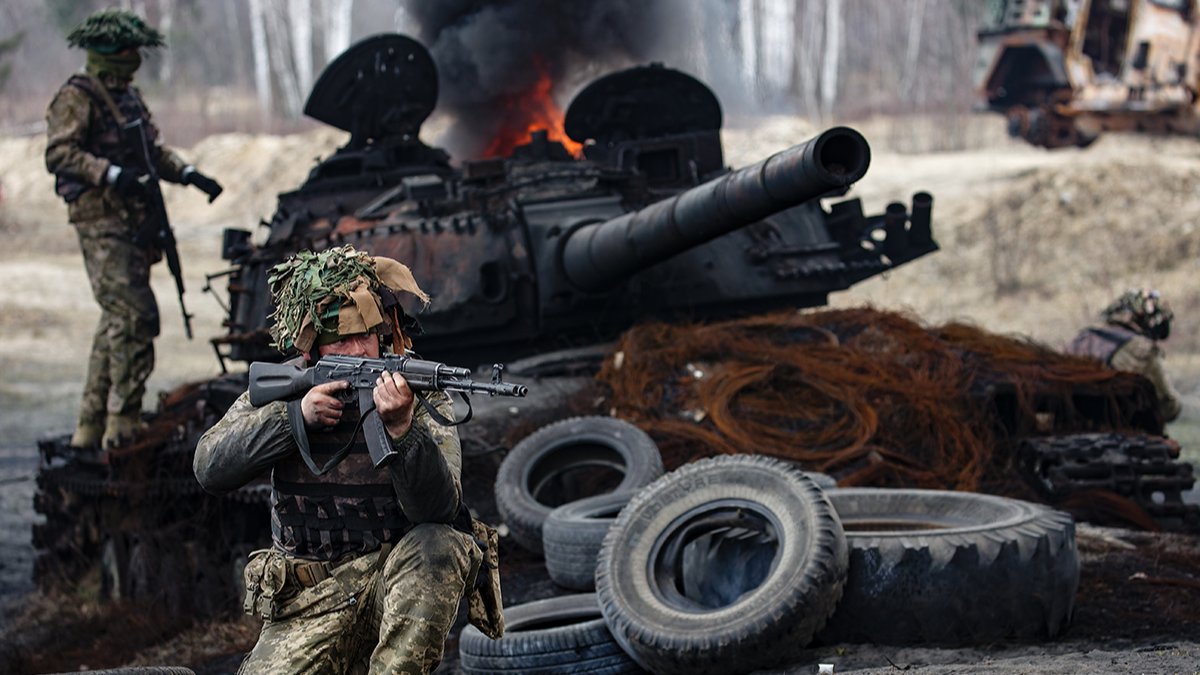In two years of war in Ukraine, hundreds of thousands of soldiers and civilians have been killed, entire cities have been reduced to rubble and vital Ukrainian infrastructure destroyed. Novaya Europe discussed the most important milestones of the war with military analysts to see how strategy and tactics have changed over the past two years on both sides.
Russian troops invaded Ukraine before dawn on 24 February 2022. The offensive was multi-pronged and led to Russia occupying a significant swath of Ukrainian territory. But the Kremlin failed to achieve its main objectives of regime change and establishing full control over the country.
From numerous leaks and intelligence data sources, we now know that the Kremlin planned to conduct a quick operation to assume overall power in Ukraine, says military analyst Kirill Mikhailov, formerly of the Conflict Intelligence Team, an independent organisation that investigates armed conflicts. Russia also planned to completely take out Ukrainian air defences, as the US did in Iraq in the Gulf War in 1991, but failed due to insufficient intelligence and poor organisation, he adds.
However, the Russian army top brass was erroneously informed that Ukrainian air defences had been destroyed, leading to Russian aircraft being shot down by anti-aircraft guns as they flew over enemy territory and serious losses for the Russian Aerospace Forces in the spring of 2022.
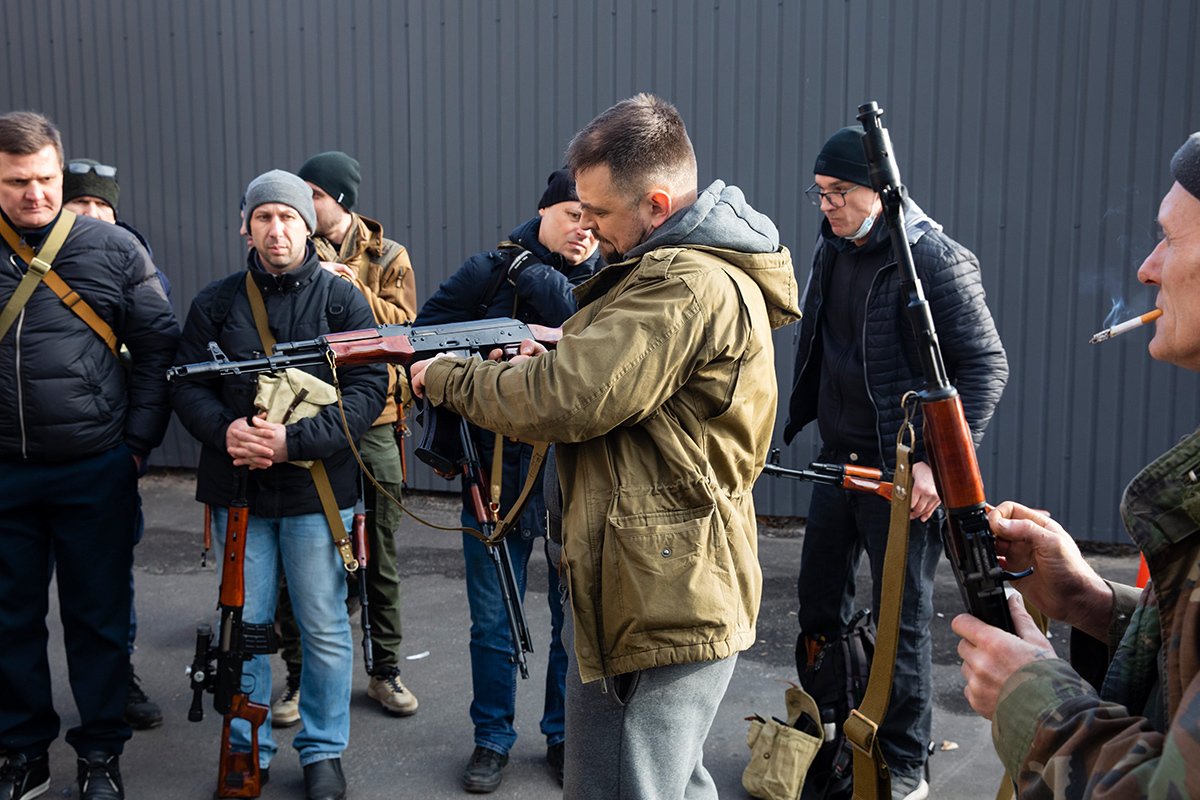
Territorial defence fighters arming themselves in Kyiv, 25 February 2022. Photo: Mykhaylo Palinchak / EPA-EFE
The Kremlin assembled almost all of its available troop units from around the country in preparation for its invasion of Ukraine. Each Russian line regiment (motorised rifle platoons, marines and airborne troops) allocated at least two battalions of professional soldiers for the invasion. The forces that invaded Ukraine thus numbered anywhere up to 190,000 fighters.
Add to that forces of the self-proclaimed Donetsk and Luhansk people’s republics in occupied eastern Ukraine, which attacked the entire Donbas front on 24 February and broke through Ukrainian defences near the city of Volnovakha in the Donetsk region, and you have another 30,000 soldiers. These were large enough formations that could, with proper planning and execution, have encircled significant numbers of Armed Forces of Ukraine (AFU) troops. The entire Ukrainian army at the time of the invasion numbered about 200,000 soldiers.
“At the start of the invasion, relatively small numbers of Russian troops attacked in multiple locations at once,” says Israeli military expert David Sharp.
“You could say Moscow bit off more than it could chew.”
Sharp adds that Ukrainian forces clearly weren’t prepared to repel attacks throughout the country, considering such a scenario “apocalyptic”.
Mikhailov says that as almost the entire Ukrainian army put up organised and fierce resistance, Russia’s numerical superiority failed to give it the advantage.
Indeed, there appeared to be no unified leadership on the Russian side at all, with four main groups of Russian forces, each created on a military district basis, entering Ukraine in different locations and acting for the most part independently of each other.
Russian forces were also lacking from the point of view of logistics; attempting to bring in columns of equipment without performing reconnaissance or providing cover. These columns were then ambushed by the AFU, interrupting vital supply chains, and forcing Russian soldiers to loot grocery stores to find food. This led to the offensive in Kyiv and other areas failing.
In Mikhailov’s words, Russia planned its “blitzkrieg” apparently in the belief that it would face no real military resistance from Ukrainians and as if it was “preparing for exercises, not for war with a real enemy”.

Burnt out Russian military hardware in Irpin, Kyiv region, April 2022. Photo: Laurel Chor / SOPA Images / LightRocket / Getty Images
Fighting in southern Ukraine and the Donbas
However, in the south of Ukraine, the Russian army had significant successes in the first stage of this full-scale war. The unexpected breakthrough from annexed Crimea and overwhelming superiority in terms of equipment, artillery and manpower saw the major cities of Kherson, Melitopol and Mariupol in three occupied Ukrainian regions fall to the Russians.
Russian troops in the south of the country were unable to continue the offensive despite attacking multiple locations at once as Ukraine had sufficient forces to defend the cities of Kryvyi Rih, Mykolayiv and Odesa.
According to Sharp, allied supplies were vital to this AFU success. Very early on in the war, Ukraine faced ammunition shortages for many of its weapon systems, though former Warsaw Pact countries provided Kyiv with Soviet-era weapons and ammunition.
Sharp says that Russian forces were on the offensive until the autumn of 2022. They captured several cities in the east of the country including Mariupol, Lysychansk, Sievierodonetsk and Izyum, large swaths of Ukrainian territory and had occupied almost the entirety of the Luhansk region.
The Kremlin was then hoping to surround the AFU in the Kramatorsk-Sloviansk area of the Donbas. Success would have allowed them to seize the whole of the Donetsk region too. However, insufficient planning and poor intelligence led to failure. Ukraine’s overwhelming superiority in drone warfare was also a factor, helping them to offset their lack of fire-power and to track enemy positions.
Ukrainian successes
By the summer of 2022, Russian troops were exhausted. By the autumn, their losses were so bad that the over 1000-kilometre-long front line was poorly manned. Russia ramped up efforts to recruit to volunteer battalions, but it still wasn’t enough to make up for the huge number of the dead and wounded.
This, says Mikhailov, gave the AFU battlefield superiority in the eastern Kharkiv region in autumn of 2022 and allowed it to launch a sudden offensive, further boosted by the fact that Ukrainian units had an adaptive style of command and had good communications between individual units. The AFU’s use of the M142 HIMARS rocket launchers it had just received from its allies also wreaked havoc in Russian ranks.
Russian forces, meanwhile, continued to face fatal breakdowns in communications between combat units using high-precision weapons and their command structures, issues that persist for the most part to this day.
In September 2022, Russian airborne forces were again forced to fly over the front line in an attempt to repel the Kharkiv offensive, and again came under fire from Ukraine’s Western-supplied anti-aircraft systems as well as those left over from the Soviet era.
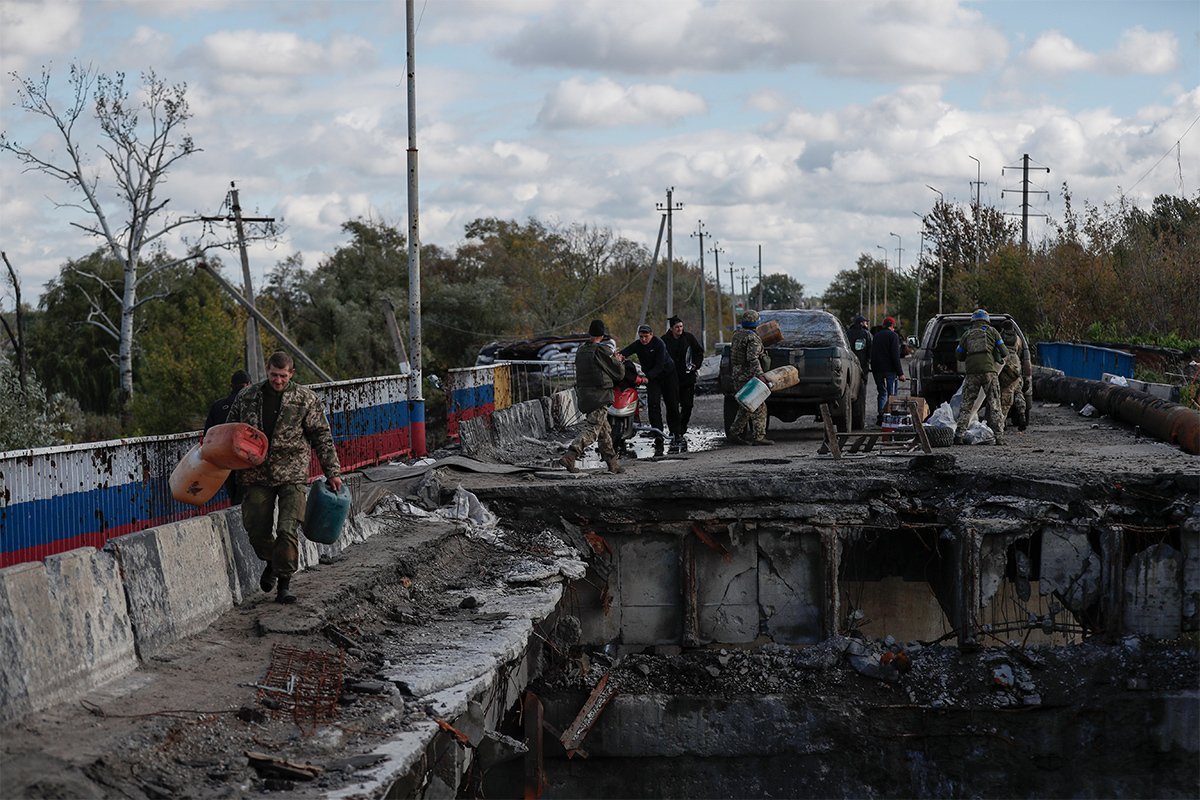
Ukrainian soldiers crossing the remains of a bridge in liberated Kupiansk, a city in the Kharkiv region. October 2022. Photo: Atef Safadi / EPA-EFE
High-precision artillery shells and Western MLRS rockets forced Russia to change many aspects of its logistics and troop command and control, Mikhailov says. The appearance of HIMARS launchers on the front line in the first weeks of the war made it possible for Ukraine to destroy Russian command control, communication centres, weapons depots, personnel deployment sites and many other important facilities. “Now shells are trucked to the front line from warehouses practically in Russia. Command control and communications centres have had to be moved away from the front,” he says.
Ukraine’s use of precision weapons, such as HIMARS and drones that can drop explosives, has significantly reduced its use of conventional ammunition. With the help of volunteers and almost no state involvement, a regular infantryman can acquire a drone and use it as a weapon, according to Mikhailov.
After a string of Ukrainian successes, the Kremlin finally embarked on a massive military recruitment drive by announcing the country’s first mobilisation since World War II.
As Russian President Vladimir Putin announced a “partial mobilisation” of the country’s military reserve on 21 September 2022, the Wagner Group began recruiting mercenaries to fight alongside the Russian military directly from prisons. This provided hundreds of thousands of fighters for the front line. After the AFU’s successful Kharkiv counteroffensive, it was clear the Russians now needed to go on the defensive.
In November 2022, the AFU retook the key city of Kherson from the Russian military. The AFU deployed elite units, but just as significant was Russian troops being cut off from supply routes on the right bank of the Dnipro. Bridges and river crossings fell within HIMARS range. Moscow decided to abandon Kherson, shelving plans to attack Mykolayiv and Odesa, and take up a defensive position.
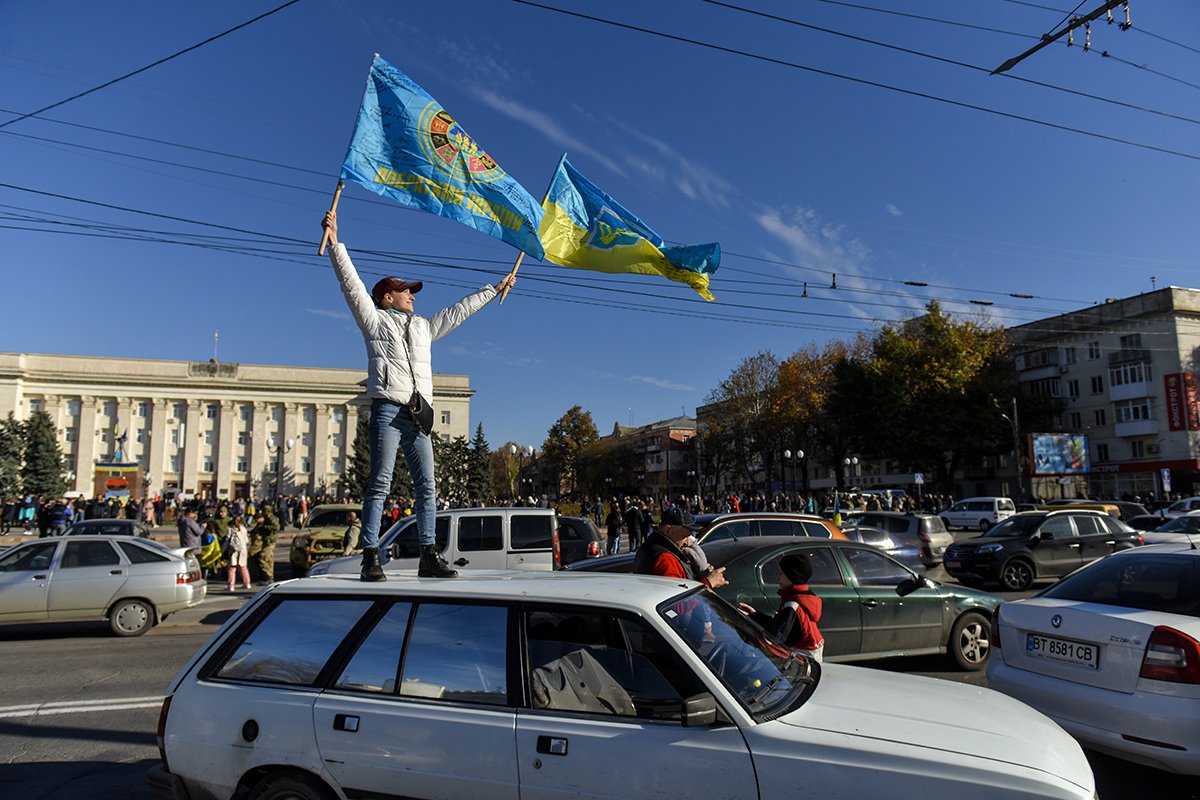
Kherson residents greeting Ukrainian troops after the liberation of the city. Photo: Oleg Petrasiuk / EPA-EFE
Positional war
Mikhailov thinks the war was already showing signs of becoming positional back in 2022. In the spring of that year, there was heavy fighting on the outskirts of Kyiv with no significant progress for the Russian side. Since then, there has been no major breakthrough for either side in the Donbas since Russian forces captured Mariupol in May that year. In 2023, the war finally became static, with neither side having sufficient superiority over the other to be able to capture large swaths of territory.
Sharp concurs with Mikhailov, noting that the front finally began to stabilise after Russia’s withdrawal from Kherson in November 2022, when its troops managed to organise a competent multi-layered defence.
“Even the capture of Bakhmut at the end of May 2023 wasn’t a major strategic victory for the Russian army,” Mikhailov explains. “The huge loss of personnel and equipment meant that Russia wasn’t able to turn it into success elsewhere.”
After Wagner Group leader Yevgeny Prigozhin’s mutiny in June 2023, the mercenaries effectively ceased to exist as a combat unit. “There was no question of advancing on the cities of Chasiv Yar, Kramatorsk and Sloviansk,” says Mikhailov.
Ukrainian units had also been hard hit at this point. Many that had defended Bakhmut in the east of the country were unable to prepare for an offensive, contributing to the failure of the Ukrainian counteroffensive in the Zaporizhzhia and Donetsk regions in the summer of 2023.
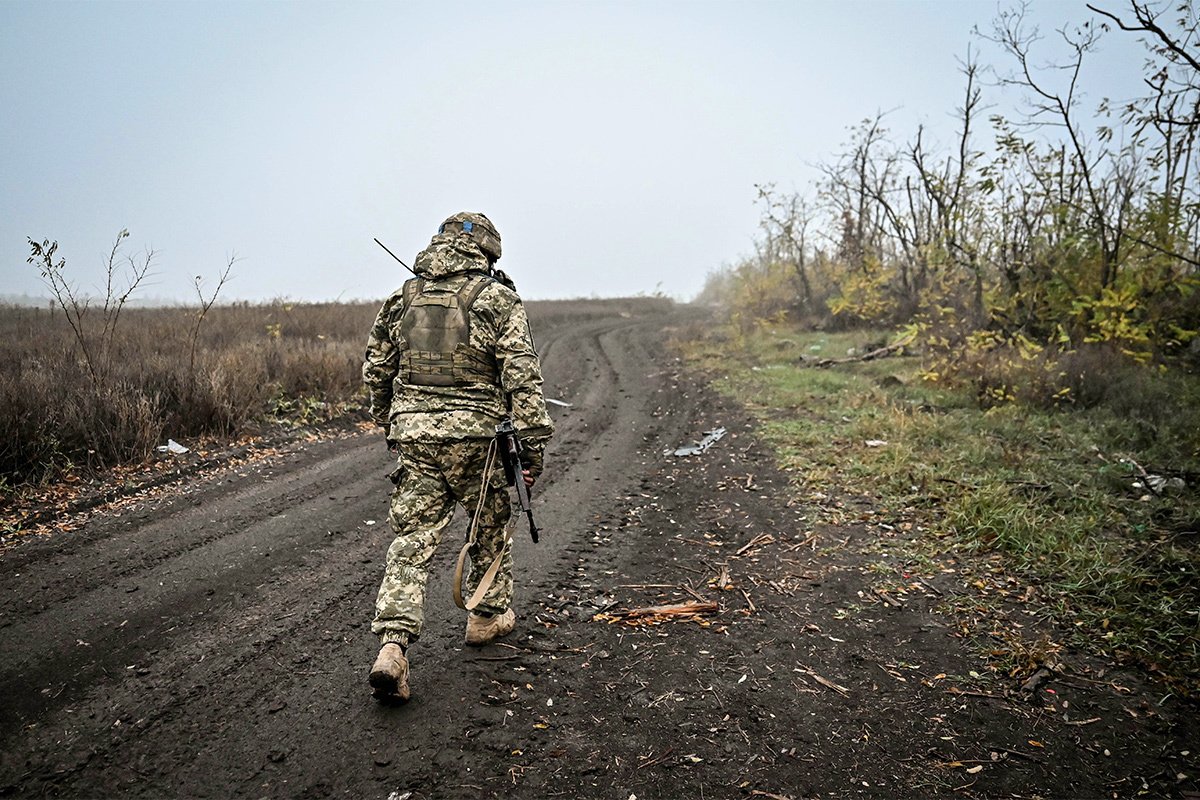
A Ukrainian soldier near Robotyne, Zaporizhzhia region. November 2023. Photo: Dmytro Smolienko / Future Publishing / Getty Images
Sharp suggests AFU command hoped to liberate the town of Tokmak in the Zaporizhzhia region of southeastern Ukraine in the summer of 2023, and, if successful, to gain access to the coast of the Sea of Azov, storm Melitopol and cut off the land corridor to Crimea.
Public domain information suggests that US military advisers suggested Ukraine focus all its forces on attacking one section of the front line. But Valeriy Zaluzhnyi, the AFU commander-in-chief at the time, ultimately took the decision to attack in several places at once.
It now seems clear that serious mistakes were made by the AFU’s high command in planning their operations last summer. It’s now obvious that there was an incorrect assessment of both the AFU’s own strength and of Russia’s defence capabilities.
“A successful offensive means concentrating a significant number of forces on one section of the front — four or five mounted units, say — without the enemy noticing, and attacking suddenly,” says Mikhailov, adding that this is now almost impossible due to modern satellite and drone reconnaissance.
Mikhailov adds that completely disabling enemy fire-power is vital for a successful offensive. This would require a huge number of HIMARS rockets or high-precision aerial bombs and air-to-surface missiles, which the AFU simply didn’t have last summer.
“Ukraine switched to an active defence strategy in October 2023,”
says Roman Svitan, a military expert and reserve AFU colonel. “Since then, the situation at the front has become static.” Svitan suggests the situation could continue like this for at least another two years, but thinks that if Ukraine’s allies supply aircraft and several hundred high-precision rockets, such as ATACMS ballistic missiles, and resolve problems with the supply of other weapons by the spring, further attempts at a counteroffensive would be possible. “This would mean the Ukrainian army could shell and bomb military facilities in Crimea with long-range weapons. Once those were destroyed, it could launch a ground offensive,” he explains.
According to Svitan, Russian troops will exhaust their offensive potential with their bloody assaults and attacks by March, at which point deliveries from Western allies could play a decisive role in AFU success. He believes Ukraine will receive several dozen F-16 fighter aircraft, enough to create two or more air brigades. Should they focus on one location — Crimea, say — they could have significant success. Svitan adds that Ukraine will eventually receive up to 100 combat aircraft, giving it aerial superiority and ensuring Russia’s Black Sea Fleet will remain in distant naval bases.
Other analysts are less optimistic. Sharp says that the relatively small number of F-16 fighters Ukraine is due to receive in the spring, and the fact that they’re older models means they won’t be able to affect the situation on the front line radically. If at least two dozen aircraft arrive with effective weapons systems, this may make it possible to achieve local superiority at certain parts of the front, but the aircraft alone will not be enough to turn the tide in the war.
“We await confirmation of an aid package from the US House of Representatives. Without that, it will be hard for Ukraine to defend itself successfully,”
Sharp adds.
“There simply are no weapons that can radically change the rules of the game in this war,” another Russian analyst who requested anonymity says. “This is a confrontation between two large groups of personnel and equipment.”
Sharp explains that two dozen F-16s is no substitute for the ground forces required to retake territory. Missiles can damage enemy logistics by destroying enemy supply lines, but ultimately only infantry units can storm a city, and the Ukrainian infantry is currently tied up in defence and is unable to spend months preparing for an offensive.
No victory in sight
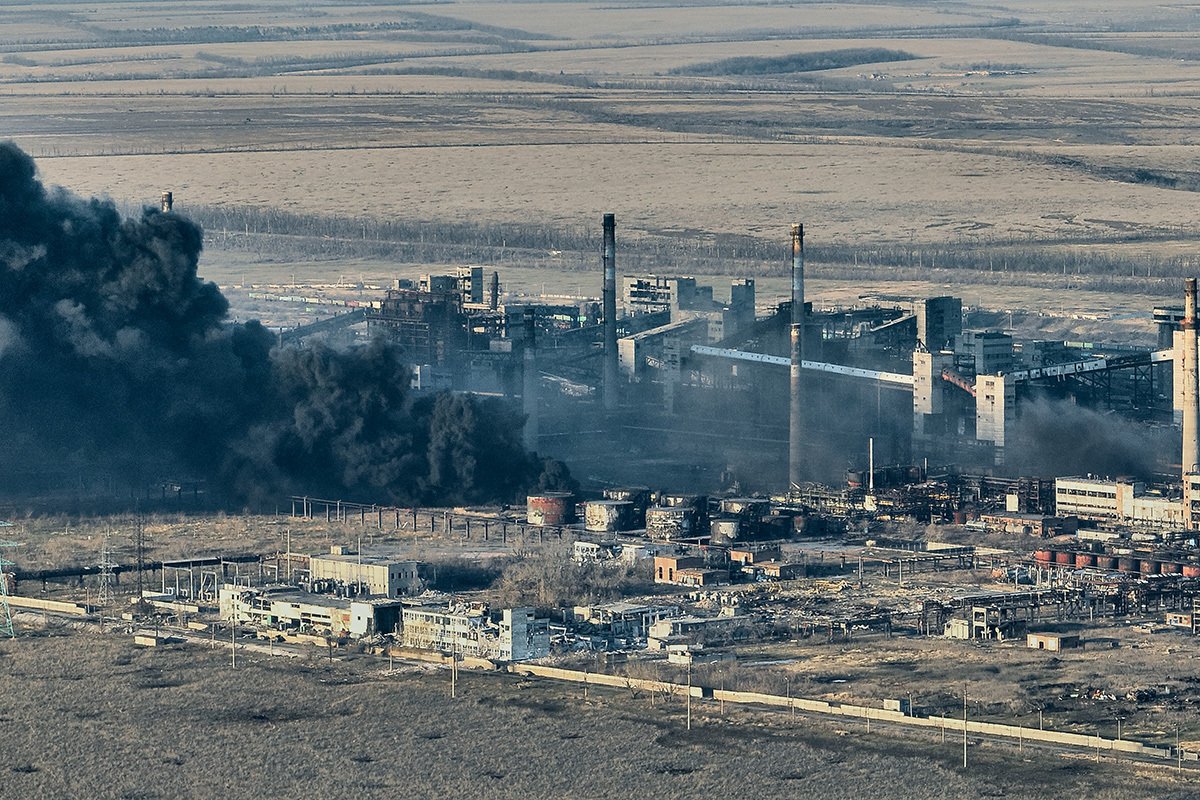
A view of the Avdiivka Coke and Chemical Plant, the largest coke producer in Ukraine before the war, February 2024. Photo: Kostiantyn Liberov / Libkos / Getty Images
The capture of Avdiivka, near Donetsk, says the Russian expert, means Russia was able to prevent the Ukrainian side penetrating deep into nearby Russian positions. The Russian units that were freed up have now been deployed to other areas of the front. However, there is currently no sign that Russia is aiming to conduct any further offensive in the area.
Perhaps, as many experts suggest, Moscow will be forced to announce a second wave of mobilisation following the Russian presidential election in March. That said, Russia doesn’t currently have the resources to train and arm several hundred thousand conscripts. There is also a shortage of professional officers at all levels within Russian units.
“Analysts think that, at current rates, Russia will run out of tanks by 2026,”
says Mikhailov. “Russia sends about 1,500 tanks to the front line per year. That includes both tanks which have been upgraded and newly manufactured ones. It may be enough to cover losses, but isn’t enough for a new wave of mobilisation. So I think it unlikely that Russia will bring hundreds of thousands of new soldiers to the front.”
The Ukrainians also have more than enough complications to deal with.
“The AFU currently have several significant problems,” the Russian military expert says. “There is a shortage of ammunition, which seems likely to continue for at least another few months, and a shortage of personnel. This war is also about the numbers. The cost of achieving results has risen. This translates into huge human losses and huge resource expenditure.”
“It’s a stalemate on both sides,” says Sharp. “We’re a long way from even the entire Donetsk region being captured. Neither side can achieve numerical superiority anywhere on the front sufficient to break through enemy lines and achieve strategic success. Both Kyiv and Moscow lack the resources and ability to launch serious combat missions.”
Join us in rebuilding Novaya Gazeta Europe
The Russian government has banned independent media. We were forced to leave our country in order to keep doing our job, telling our readers about what is going on Russia, Ukraine and Europe.
We will continue fighting against warfare and dictatorship. We believe that freedom of speech is the most efficient antidote against tyranny. Support us financially to help us fight for peace and freedom.
By clicking the Support button, you agree to the processing of your personal data.
To cancel a regular donation, please write to [email protected]
